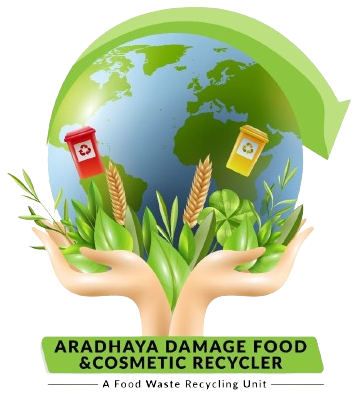Cattle feed manufacturing is a critical component of the livestock industry, directly impacting the health and productivity of cattle. This guide delves into the intricacies of cattle feed production, highlighting the roles and contributions of top manufacturers, the production processes, and the importance of quality feed in livestock management. Whether you are a farmer, a feed distributor, or simply interested in the industry, this guide will provide valuable insights. cattle feed manufacturers in india

The Importance of Quality Cattle Feed
Quality cattle feed is essential for maintaining the health, growth, and productivity of cattle. Proper nutrition ensures better milk production in dairy cattle and optimal weight gain in beef cattle. High-quality feed can also reduce the incidence of diseases and improve overall herd performance. best cow feed in india
Nutritional Requirements for Cattle
Cattle require a balanced diet consisting of:
- Carbohydrates: For energy.
- Proteins: For growth and repair.
- Fats: As a concentrated energy source.
- Vitamins and Minerals: For various metabolic functions.
- Water: Vital for all bodily functions.
Leading Cattle Feed Manufacturers
1. Cargill Animal Nutrition – Cargill is a global leader in animal nutrition, offering a wide range of feed products. Their commitment to research and development ensures innovative and effective feed solutions.
2. Purina Animal Nutrition – Purina provides high-quality feed solutions backed by extensive research. Their products cater to various livestock needs, ensuring optimal nutrition and performance.
3. Land O’Lakes – Land O’Lakes focuses on dairy nutrition, providing feeds that support milk production and overall dairy herd health.
4. ADM Animal Nutrition – ADM offers a comprehensive line of feed products and supplements designed to enhance animal health and productivity.
5. Nutreco – Nutreco specializes in sustainable animal nutrition solutions, ensuring high-quality feed while minimizing environmental impact.

Cattle Feed Manufacturing Process
- Ingredient Selection – Selecting high-quality raw materials is the first step. Ingredients typically include grains, protein meals, vitamins, minerals, and additives.
2. Grinding – Ingredients are ground to a consistent particle size to ensure uniform mixing and ease of digestion by cattle.
3. Mixing – Ground ingredients are thoroughly mixed to create a balanced feed. This ensures each portion contains the required nutrients.
4. Conditioning – The feed mixture is conditioned with steam to soften it, making it easier to pelletize and improving digestibility.
5. Pelletizing – The conditioned feed is formed into pellets using a pellet mill. Pellets are preferred for their ease of handling and reduced wastage.
6. Cooling – Pellets are cooled to remove excess moisture and heat, preventing mold growth and ensuring shelf stability.
7. Packaging –The final product is packaged and labeled for distribution. Proper packaging ensures the feed remains fresh and protected from contaminants.
Quality Control in Cattle Feed Manufacturing
1. Raw Material Testing – Ingredients are tested for nutrient content and contaminants before processing to ensure they meet quality standards.
2. Process Monitoring – Each stage of the manufacturing process is closely monitored to maintain consistency and quality.
3. Finished Product Testing – The final product is tested for nutrient content and quality assurance before being released to the market.
Trends and Innovations in Cattle Feed Manufacturing
1. Sustainable Ingredients – There is a growing focus on using sustainable and locally sourced ingredients to reduce the environmental footprint of feed production.
2. Precision Nutrition – Advances in technology allow for the formulation of feeds tailored to the specific needs of individual herds, improving efficiency and outcomes.
3. Probiotics and Prebiotics – Incorporating probiotics and prebiotics into feed enhances gut health and improves overall cattle health and productivity.
4. Non-GMO and Organic Feeds – There is an increasing demand for non-GMO and organic feed options to meet consumer preferences for natural and sustainably produced meat and dairy products.
Challenges in Cattle Feed Manufacturing
1. Supply Chain Issues – Ensuring a consistent supply of high-quality raw materials can be challenging, especially with fluctuating market conditions.
2. Regulatory Compliance – Manufacturers must comply with stringent regulations regarding feed safety and quality, which can vary by region.
3. Cost Management – Balancing the cost of raw materials with the need to produce affordable feed is a constant challenge for manufacturers.
4. Sustainability –Manufacturers are under pressure to adopt sustainable practices to minimize their environmental impact, which can require significant investment.
Conclusion
Cattle feed manufacturing is a vital industry that supports the health and productivity of livestock worldwide. By understanding the processes, leading manufacturers, and trends in the industry, stakeholders can make informed decisions that benefit their operations and contribute to the overall well-being of their herds. For more insights and information on cattle feed manufacturing and other agricultural topics, visit Aradhaya Food Recycle.
Additional Resources
For further reading and resources on cattle feed manufacturing, consider exploring:
- The Food and Agriculture Organization (FAO): For global standards and guidelines on animal feed.
- The American Feed Industry Association (AFIA): For industry news and regulatory updates.
- National Cattlemen’s Beef Association (NCBA): For information on cattle nutrition and management practices.
By staying informed and utilizing the latest innovations and best practices in cattle feed manufacturing, producers can ensure their herds remain healthy, productive, and profitable.
